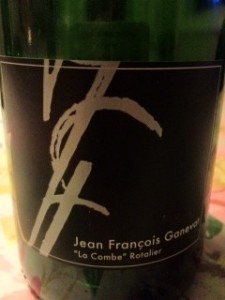I recently had to face the horrifying self-realization that I am a hoarder. I am not sure of the exact moment I made this realization. That slight tinge of recognition when I saw a few minutes of a reality TV show on the subject? When I started having to ban houseguests from opening certain closets or even bedroom doors? I don’t know. But I buy things I think are wonderful and beautiful and then decide they are so wonderful and beautiful that I can’t possibly sully them with use. And so they sit, in packages, with labels still intact. If I ever mention wanting something in the presence of my mother, she tells me to go shopping in my closet first. She is sure I will find it there, whatever it is. She is usually right.
This hoarding instinct tends to permeate my wine buying habits as well. I find a wine I am incredibly excited about and carefully store it away because I can’t possibly bring myself to drink it and then be faced with the harsh reality that I no longer have it. For a while, I tried purchasing two bottles of every wine that excited me – one for now, one for later – but that got to be expensive. I decided just recently that it was time to start enjoying some of these beautiful and wonderful things before I was no longer around to do so. After all, things happen. And so, this is how on a recent Sunday evening I came to be drinking a delightful wine that had been chilling in my wine refrigerator for longer than I could remember. What had I been waiting for?
The wine was Jean-François Ganevat Crémant du Jura “La Combe” Rotalier, a sparkling wine from the fascinating wine region of Jura in eastern France. Jura, from which the term Jurassic comes, has topography similar to that found millions of years ago with the key soil types being limestone and marlstone. I was incredibly pleased with the wine. Its lovely pale amber hue with delicate bubble ballet immediately belied any notion that this was going to be just another Champagne wannabe. The nose was abundant with fruit. Pears and stone fruits such as peach and apricot flooded my taste buds and then were quickly enveloped by a pronounced biscuitiness that lingered for several glorious moments. It was during one of these moments that I recalled why I had purchased this particular bottle of wine. It was produced using biodynamic agriculture. Jean-François Ganevat converted his family’s estate in Rotalier to biodynamics in 2006 after returning from Burgundy where he spent time in the company of natural wine enthusiasts. Ganevat’s methods include minimal intervention with nature while growing his grapes as well as minimizing intervention in the winemaking process. For example, he limits his use of sulfur to a bare minimum. I have yet to try a biodynamic wine I do not like. This wine was no exception. And that was the most wonderful and beautiful thing of all.
